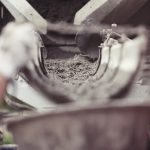Cement & Lime Industry Magnetic Separation
Cement and lime production are a significant part of the economy due to their usefulness for construction and civil engineering. Lime specifically is used in the steel industry, but it also makes up construction materials, certain paints, plastics, and rubber.
In the conveying process, in order to extract and separate tramp metal from cement and lime before it makes its way to the crushers, pulverizers, grinders, etc., magnetic separation equipment is required. Of course, it keeps unwanted tramp out of the final product, but it also protects machinery down the conveying line from costly damage.
Types of magnetic machinery used for this purpose include the following:
- Magnetic head pulleys: this is a self-cleaning magnet; it removes tramp metals from the bulk product as it moves along a conveyor, passing over the head pulley. Tramp is captured in the underflow and discarded from a bin.
- Suspended plate magnets: installed directly above a conveyor belt or even a head pulley discharge point, these types of suspended magnets extract ferrous tramp.
- Cross belt separators: the cross belt is another type of suspended magnet that removes tramp metal and discharges it off the side or end of the conveyor.
- Magnetic conveyors: in contrast to other types of conveying like bucket or incline, the magnetic conveyors move ferrous material from horizontal to vertical angles. It produces product degradation and allows for better dust control.
- Drum separators: these are used for separation from slurries, granules, and powders and work best for high-volume products. It has a stationary magnetic core and a spinning outer shell.

